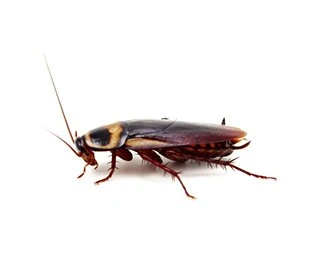myRentokil
Access the online reporting system
There are around 4,000 species of cockroaches worldwide and about 450 species in Australia, but very few are pests.
The three main types of cockroaches commonly found in homes and businesses in Australia include the German cockroach, Australian cockroach and American cockroach.
Identifying the cockroach species will help deal with an infestation more effectively. See below for descriptions of the appearance, lifestyle and habits of the cockroaches common in Australia:
(Periplaneta australasiae)

(Blatella germanica)

(Blatta orientalis)

(Periplaneta americana)
The American cockroach is one of the largest pest cockroaches to invade homes and commercial properties.

(Supella longipalpa)

(Periplaneta fuliginosa)

Protecting Australian homes and businesses for over 50 years